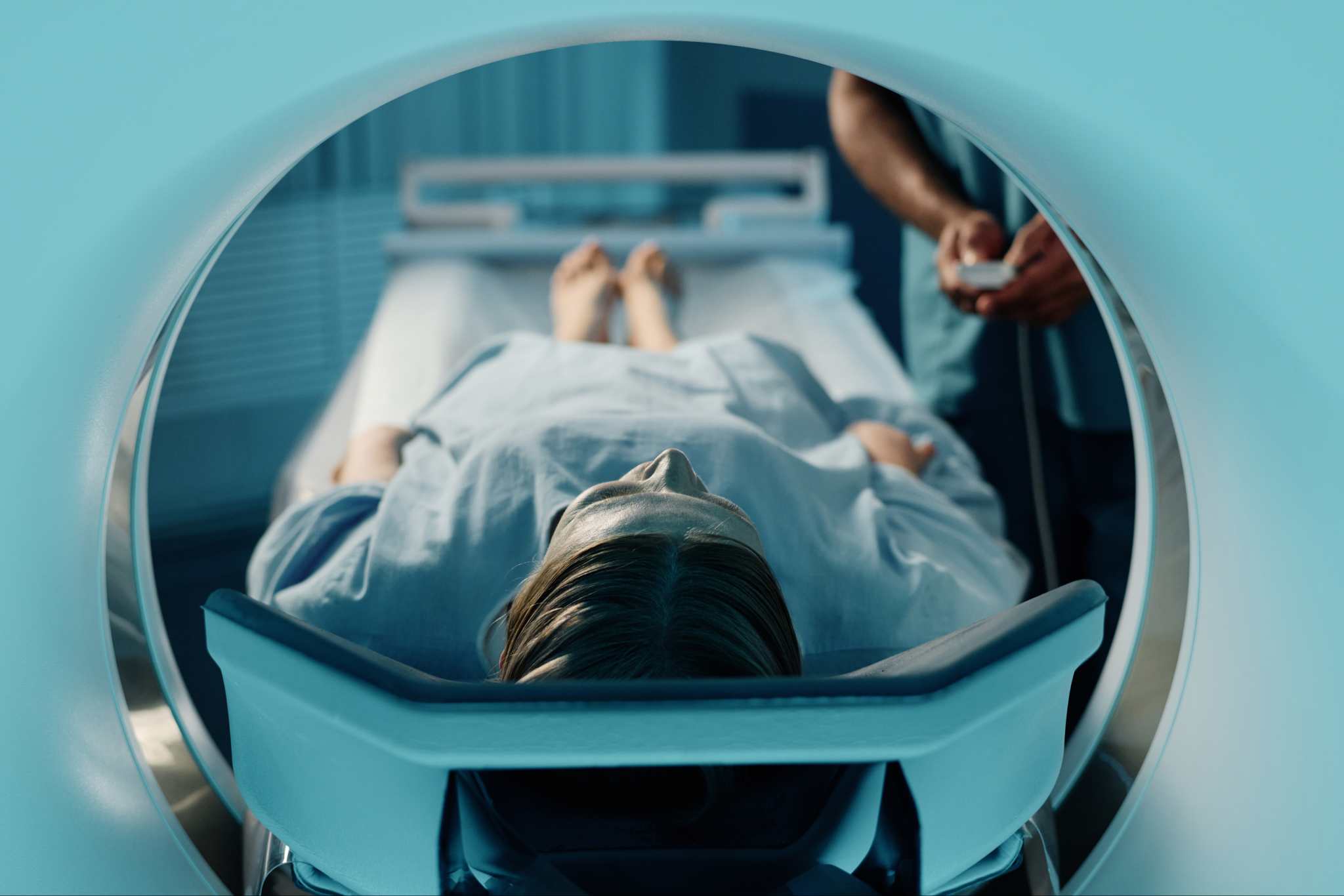After a car accident, getting an MRI scan is an important step in understanding the extent of your injuries. It offers a detailed look inside your body, revealing issues that X-rays or CT scans might miss, such as soft tissue damage and spinal cord injuries. However, even with this advanced technology, sometimes an MRI can come back clear while still experiencing pain. This can be incredibly frustrating, but it’s important to remember that a clear MRI doesn’t necessarily mean you’re not injured.
MRIs are great at finding certain problems, but they may miss certain types of soft tissue injuries or nerve damage. If this happens, it’s important to remember that the MRI results are just one piece of the puzzle. Talking to car accident injury specialists at AICA about your ongoing symptoms can help you explore other diagnostic options and get the treatment you need.
Common Reasons Why an MRI Might Show Nothing
After a car accident, it can be concerning if an MRI shows nothing despite the presence of symptoms. This situation can occur for several reasons, which do not necessarily indicate the absence of injury but rather the limitations or specific circumstances of the imaging process.
- Soft Tissue Injuries: MRI scans may not always detect minor soft tissue damage, which can still cause significant pain and discomfort.
- Delayed Symptoms: Some injuries, such as whiplash or muscle strains, might not immediately show up on an MRI and could take time to develop.
- Small or Subtle Injuries: Tiny fractures, slight ligament tears, or other minor injuries might be too subtle to be picked up by an MRI scan.
- Inflammation: Inflammation and swelling can sometimes obscure the visibility of certain injuries on an MRI.
- Non-Structural Issues: Pain might stem from functional problems like muscle spasms or nerve irritation, which aren’t always visible in imaging studies.
- Resolution Limitations: The resolution of MRI machines, although high, might still miss very small abnormalities or subtle changes in tissue.
What to Do If Your MRI Shows Nothing But You Still Feel Pain
Experiencing pain despite a clear MRI can be frustrating and worrisome, but there are several steps you can take to address your symptoms and find relief.
1. Seek a Second Opinion
One of the first steps is to consider seeking a second opinion from another medical professional. Different doctors may have varying levels of experience and expertise in interpreting MRI results. A second opinion can provide a fresh perspective on your condition and potentially uncover issues that were missed initially.
2. Explore Additional Diagnostic Tests
If pain persists, it might be necessary to undergo further diagnostic tests. MRIs are highly detailed but not infallible. Additional tests can offer more insights into your condition. These might include:
- Nerve Conduction Studies and Electromyography (EMG): These tests measure how well your nerves and muscles are functioning. They can help identify nerve damage or conditions like neuropathy that might not be visible on an MRI.
- Ultrasounds: These are particularly useful for examining soft tissue injuries. They can detect issues such as muscle tears, tendon injuries, or ligament damage that might not show up on an MRI.
- CT Scans: Sometimes, a CT scan can provide different details than an MRI, especially for bone-related injuries.
- Blood Tests: These can help identify inflammatory conditions or infections that might be causing your symptoms.
3. Keep a Detailed Record of Your Symptoms
Documenting the severity, duration, and any changes in your condition can provide valuable information to your healthcare provider. Consider the following:
- Severity: Rate your pain on a scale from 1 to 10. Note if the pain varies in intensity throughout the day.
- Duration: Record how long each episode of pain lasts. Note if the pain is constant or comes and goes.
- Changes: Keep track of any changes in your symptoms. This includes new symptoms, worsening pain, or any improvements. Note any activities or treatments that seem to affect your pain.
4. Consult Specialists
Depending on the nature of your symptoms, it might be beneficial to consult with specialists. For instance, a neurologist can provide insight into nerve-related pain, while an orthopedic specialist can evaluate musculoskeletal issues. A pain management specialist might also be able to offer treatments that focus on alleviating chronic pain.
5. Consider Physical Therapy
Physical therapy can be highly effective in managing pain and improving mobility, even when an MRI shows no significant issues. A physical therapist can design a personalized exercise program to strengthen muscles, improve flexibility, and reduce pain. They can also teach you techniques to manage pain and prevent further injury.
Taking these steps can help you navigate the frustration of clear MRI results while still experiencing symptoms. Always consult with your healthcare provider to find the best course of action for your specific situation.
Alternative Diagnoses: Conditions That Might Not Show Up on MRI

There are several conditions that might not be detected by an MRI. For instance:
- Nerve Damage: Conditions like neuropathy or small nerve injuries may not be visible on an MRI. Nerve conduction studies and electromyography (EMG) can be more effective in diagnosing these issues.
- Soft Tissue Injuries: Minor muscle tears, tendon injuries, or ligament injuries like whiplash might be too small to detect. These can be identified through physical examination or ultrasound.
- Early Stage Inflammatory Conditions: Conditions like early-stage arthritis or tendonitis might not show up until they have progressed further. A combination of blood tests and physical exams may be necessary.
- Psychological Factors: Pain can sometimes be related to psychological stress or trauma, which would not appear on an MRI. Consulting with a mental health professional can be helpful in such cases.
Considering these alternative diagnoses with your healthcare provider ensures that you explore all possible avenues for identifying the cause of your pain and receiving the appropriate treatment.
READ: Be Aware of These 6 Delayed Injuries After a Car Accident
The Importance of Follow-Up Care and Monitoring
Injuries can evolve over time, with symptoms sometimes appearing days or even weeks after the accident. Regular follow-up appointments allow your healthcare provider to monitor any changes in your condition and address new symptoms promptly.
Staying proactive about your health means being vigilant and communicative with your medical team. Keeping them informed about any new or worsening symptoms ensures that you receive timely and appropriate care. Follow-up care can prevent minor injuries from becoming more severe and help manage chronic pain or other long-term consequences of the accident.
How AICA Orthopedics Can Help: Comprehensive Car Accident MRI Services
If you are uncertain about your health after a car accident, AICA Orthopedics is here to support you. With 18 locations across metro Atlanta, accessing top-notch MRI and other diagnostic services is convenient. Our experienced team, including orthopedic surgeons, spine specialists, and radiologists, specializes in diagnosing and treating car accident injuries. We offer comprehensive evaluations and personalized care plans tailored to your needs.
At AICA Orthopedics, we prioritize thorough and compassionate care. Whether you require a second opinion or additional tests, our specialists are ready to assist.
Contact AICA Orthopedics today to learn more or find the nearest AICA clinic to schedule an appointment and ensure you receive the best care possible.





